Going to the country, we plan to spend more time outdoors. To make your stay in the yard as comfortable as possible, we recommend that you build a country canopy that will hide from the scorching sun or rain.
Such a canopy has a fairly simple design, so you can not buy it, but do it yourself.
Content
Types of canopies for summer cottages
This design has a lot of options for embodiment. It can be made in the form of a visor above the house, imitate a terrace, porch or arbor.
By location, the canopies are divided into:
- attached, which are located right next to one of the walls of the building. The attached canopy is most functional if it is built above the front door. So he can cope with both the role of the visor and the functions of the veranda;
- freestanding, whose appearance resembles a pergola. Awnings of this type are in most cases used as parking lots for cars or gazebos. Sometimes such a building completely covers the territory from the front door to the gate.
By design, the canopies are divided into:
- direct - the easiest option for a country canopy;
- inclined shape. This design is gable or single-handed and contributes to the drainage of thawed snow or rainwater;
- complex shapes - for example, arched structures with a roof made in the form of a semicircle).
Modern canopies for a summer residence can be made of various materials. To cover the roof today, polycarbonate, metal, corrugated board, plexiglass, slate, dense fabric are most often used, and wood and metal as a frame.
Photo gallery of types of canopies for a summer residence
DIY polycarbonate canopy
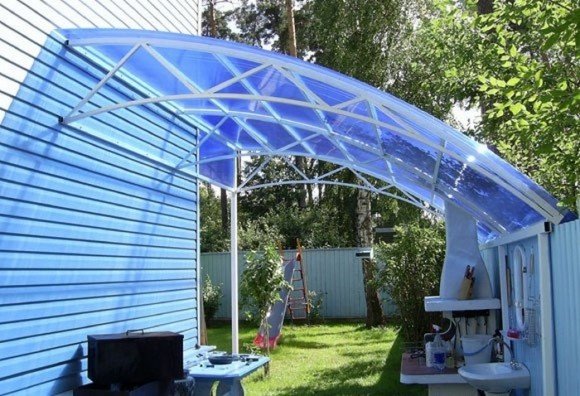
A country canopy made of polycarbonate is one of the easiest to manufacture. This material is durable and durable, for many years it retains its properties, does not succumb to the influence of temperature extremes, sun, frost, and is also resistant to mechanical damage. Polycarbonate is easily bent, therefore, it can be used for canopies of any shape - for example, for structures with a corrugated or rounded roof.
Installation of polycarbonate sheets is carried out using self-tapping screws with a rubber washer that protects the material from cracks. A polycarbonate canopy can be installed over an area of any size. The main requirement for a long service life of this design is a solid frame made of metal profile or wooden beam.
Stages of the construction of the canopy
Let us consider in stages the manufacturing process of an inclined wooden canopy made of polycarbonate attached to the house.
For the manufacture of supporting pillars of the future canopy, we need a wooden beam measuring 90x90 mm. The number of pillars depends on the size of the planned structure.
- We mark the territory, designate the position of the canopy supports. At each point obtained, we dig a square hole 0.5 m deep. The width of the hole should exceed 0.1 m. The width of the beam, which will serve as a support.
- Crushed stone is poured into the finished pits and rammed.
- We lower the bars into the prepared pits, check its verticality with the building level. Then concreted.
- At the level where the future canopy will be held, a beam measuring 90x70 mm is fixed on the wall of the house, which will be a cross-beam that carries the weight of the crate and rafters.
- Using a metal corner we connect a horizontal beam with a long stand.
- Between the front struts, two beams 90x70 mm are fixed across using metal angles.
- We assemble the rafters, for the manufacture of which we take a beam of 70x70 mm. Rafters should be laid on top of the crossbars. For fixing, you can use self-tapping screws. To attach the rafters to a beam mounted on the wall, metal corners are used.
- We make a crate of beams with a section of 50x50 mm., Which are laid horizontally across the rafters and fastened with screws;
- We fasten the leaves of polycarbonate also with the help of screws.
The sequence of manufacture of the frame is always repeated, regardless of the material selected for the roof of the canopy. The polycarbonate used in the above example can be replaced with plexiglass, corrugated board and even strong fabric.
Follow the instructions clearly - and the canopy will serve you for more than a dozen years.

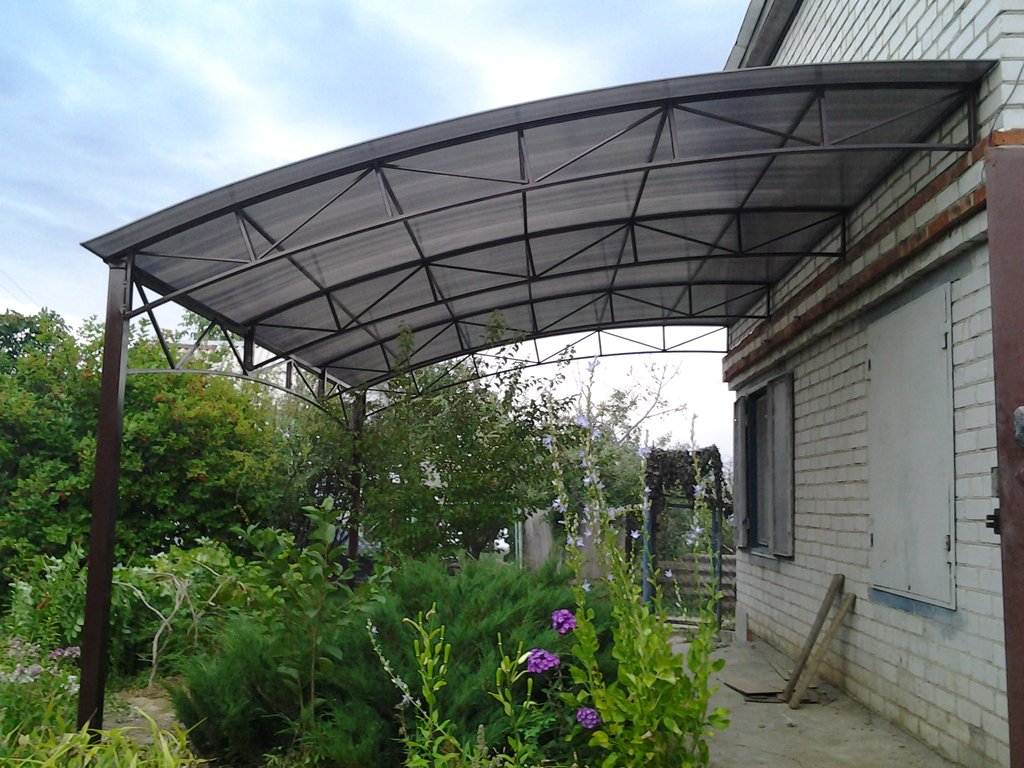
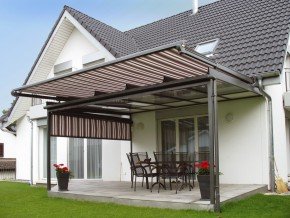
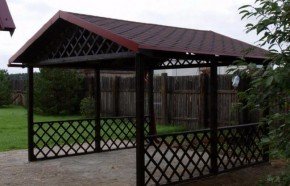
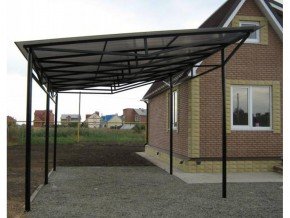



Alas, no comments yet. Be the first!